National Air Operations Command
| National Air Operations Command | |
|---|---|
| Komando Operasi Udara Nasional | |
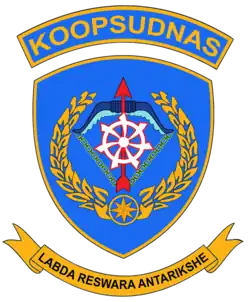 Insignia of Koopsudnas | |
| Active | 28 January 2022 (as Koopsudnas) 9 February 1962 – 28 January 2022 (as Kohanudnas) |
| Country | |
| Branch | |
| Type | Air Supremacy Command |
| Role | Early-Warning Radar Air Mobility Air Strike |
| Part of | |
| Motto(s) | Labda Reswara Antarikshe transl. 'The Mighty Conquer the Sky' |
| Website | https://koopsudnas.tni-au.mil.id/ |
| Commanders | |
| Commander | |
| Chief of Staff | |
| Inspector | |
| Head of Expert Staff Group | |
| Notable commanders | |
The National Air Operations Command (Indonesian: Komando Operasi Udara Nasional / Koopsudnas) is one of the Principal Operational Commands of the Indonesian Air Force that is responsible for air operations including air surveillance, early warning system, air supremacy, and air defense of Indonesian airspace. Koopsudnas plays a vital part for air defense capability of the Republic of Indonesia. This command is held by a three-star air force marshal.
History
History of National Air Defense Command
The forerunner to the National Air Operations Command (Koopsudnas) was the Sector Operation Centre (SOC) formed in 1958. Then the Joint Air Defense Command (Kohanudgab) was formed in 1961, its members came from the army, navy and air force. Kohanudgab is tasked with guarding defense centers in the eastern part of Indonesia. Furthermore, the National Air Defense Command (Indonesian: Komando Pertahanan Udara Nasional / Kohanudnas) was formed based on the Decree of the President of the Republic of Indonesia No. 08/PIM/PI/62 dated 9 February 1962. Kohanudnas as the Main Operations Command of the Armed Forces of the Republic of Indonesia, is tasked with carrying out integrated security defense efforts over national air space both independently and in collaboration with the main operational commands of other forces. Interoperability in the use of defense equipment such as fighter aircraft, radar, air defense artillery, and Navy warships.[1]
At the early of 1962, Operation Trikora was getting underway as the Indonesian National Armed Forces (TNI) were already engaging the military forces of The Netherlands in what is now Papua and West Papua provinces. The National Air Defense Command was established on 9 February 1962 as the air defense division of that operation commanded by AVM H.M.Sujono on the basis of the TNI Joint Service Air Defense Command (Komando Pertahanan Udara Gabungan APRI) whose commander for Papuan air force operations was Colonel Leo Wattimena of the Air Force. At the beginning, the INADF was organized into 2 Air defense sectors covering parts of the Moluccas and the then Netherlands New Guinea, each composed of a number of radar stations. By March 1962, four Air Defense Sectors were active nationwide.[2]
After the conclusion of Operation Trikora, the command was the first to be equipped with surface to air missiles in Southeast Asia, with the arrival of the S-75 Dvina SAM system, which served alongside the AZP S-60, M1939 61-K, M1939 52-K, Zastava M55, Bofors 40 mm gun and the Oerlikon GDF until the early 1970s, alongside radar stations built with Warsaw Pact and Yugoslav assistance.
.png)
The Air Force Air Defense Command, raised on 12 September 1963, form majority of the personnel under the Kohanudnas. Its primary mission is to develop and prepare combat readiness of air defense capabilities of the air force. The Air Defense Command is based at Halim Perdanakusuma Airport and has 4 air defense wings, which are 100th Missile Defense Wing, 200th Radar Wing, 300th Interceptor Wing, and 400th Radar Wing.[2] Aside from these, personnel of the Army Air Defense Artillery Corps and the Directorate of Air Defense Operations of the Navy, both of the Indonesian Army and Indonesian Navy, respectively and activated in 1962, are under its operational supervision.
History of Air Force Operations Commands
Air Force Operations Command were established 1951 with Air Cdre Ruslan Danurusamsi as its first commander.[3] In 1976, the Command was renamed into Combined Air Combat Command. In 1985, as part of a major reorganization of the armed forces, the Command was split into Air Operations Command (Komando Operasi Udara or Koopsud) 1 and 2 to oversee supervision over all regional air bases and air force formations within Indonesia on the basis of the Air Regions. On 11 May 2018, Air Operations Command 3 was officially formed on the basis of the Air Operations Command 2 bases in eastern Indonesia.[4]
On 10 August 2025, the nomenclature for the Air Operations Commands was renamed to Air Force Regional Commands (Komando Daerah Angkatan Udara or Kodau).[5]
History of National Air Operations Command
On 28 January 2022, the National Air Defense Command (Kohanudnas) was liquidated and alongside the Air Operations Command 1, 2, and 3 were officially merged into one organization, the National Air Operations Command (Komando Operasi Udara Nasional or Koopsudnas). The unified service serves as an umbrella institution managing all air defense and superiority operations under the Air Force, and thus simplifying the chain of command. The Koopsudnas is led by an Air Marshal.[6][7]
On 10 August 2025, the National Air Defense Command (Kohanudnas) was re-established as an independent unit from the National Air Operations Command.[8]
Organization
- Command HQ
- National Air Operations Commands Component (Komponen Komando Operasi Udara Nasional)
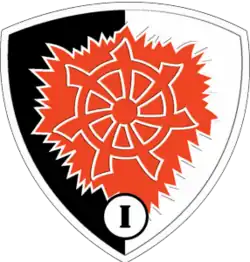 1st Air Force Regional Command
1st Air Force Regional Command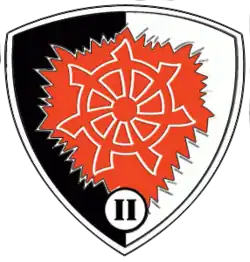 2nd Air Force Regional Command
2nd Air Force Regional Command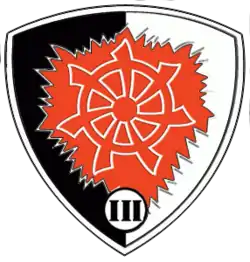 3rd Air Force Regional Command
3rd Air Force Regional Command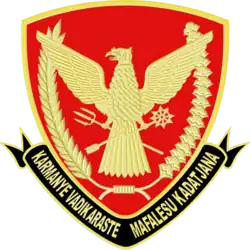 Quick Reaction Forces Command
Quick Reaction Forces Command
Air Force Regional Commands
The Air Force Regional Command is led by a two-star Air Vice-Marshal who oversees the aviation and engineering squadrons, and air base elements of all TNI-AU air force bases and subordinate air wings. Each Air Force Base is divided based on function into 2 types, namely, headquarters air base and operational air base. Meanwhile, based on the area and completeness of the facilities, it is divided into 3 types, namely type A, type B and type C. Apart from maintenance matters, Air Squadrons and their subordinate units may move from headquarter airbase to operation airbase in certain operations during combat exercises or warfare. The Engineering Squadron generally serves the maintenance of aircraft belonging to the Air Squadron which are at the same AFB.
 1st Air Force Regional Command[9] 1st Air Force Regional Command[9]
| ||||||
|---|---|---|---|---|---|---|
| Air Operations | Engineering Squadrons | |||||
| Wings | Squadrons | Aircraft | Headquarters (Type) | Operations (Type) | ||
| Badges | Names | |||||
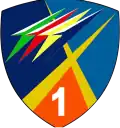 1st Air Wing
|
2nd Air Squadron | 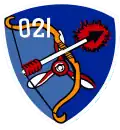 021st Engineering Squadron
|
Halim Perdanakusuma (HLM), Jakarta (A)
|
| ||
| 17th Air Squadron | ||||||
| 31st Air Squadron | ||||||
| 45th Air Squadron | ||||||
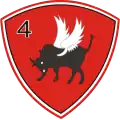 4th Air Wing
|
6th Air Squadron | 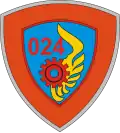 024th Engineering Squadron
|
Atang Senjaya (ATS), Bogor (A)
| |||
| 8th Air Squadron | ||||||
 |
Search and Rescue Air Unit | |||||
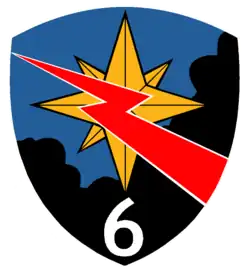 |
 |
12th Air Squadron | 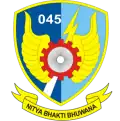 045th Engineering Squadron
|
Roesmin Nurjadin (RSN), Pekanbaru (A)
| ||
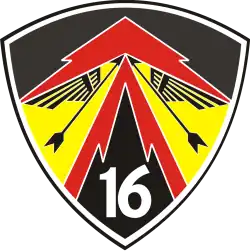 |
16th Air Squadron | |||||
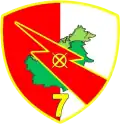 7th Air Wing
|
1st Air Squadron | |||||
| 51st Air Squadron | ||||||
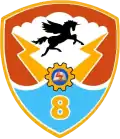 8th Air Wing
|
7th Air Squadron | |||||
| 52nd Air Squadron | Raden Sadjad (RSA), Natuna (A)
| |||||
 2nd Air Force Regional Command[11] 2nd Air Force Regional Command[11]
| ||||||
| Air Operations | Engineering Squadrons | |||||
| Wings | Squadrons | Aircraft | Headquarters (Type) | Operations (Type) | ||
| Badges | Names | |||||
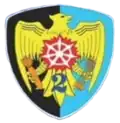 2nd Air Wing
|
4th Air Squadron | 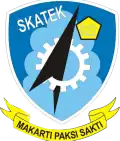 022nd Engineering Squadron
|
Abdul Rachman Saleh (ABD), Malang (A)
|
| ||
| 21st Air Squadron | ||||||
| 32nd Air Squadron | ||||||
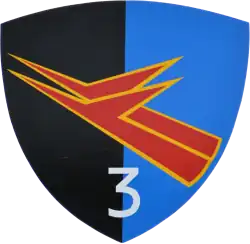 |
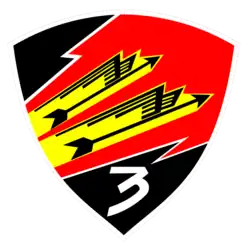 |
3rd Air Squadron | 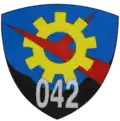 042nd Engineering Squadron
|
|||
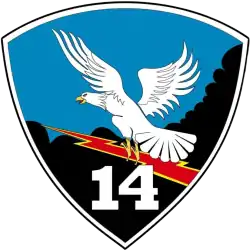 |
14th Air Squadron | |||||
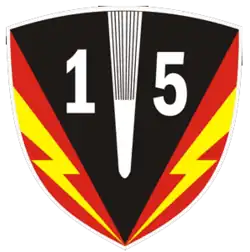 |
15th Air Squadron | |||||
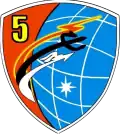 5th Air Wing
|
 |
5th Air Squadron | 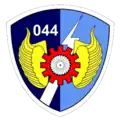 044th Engineering Squadron
|
Sultan Hasanuddin (HND), Makassar (A)
| ||
| 11th Air Squadron | ||||||
| 33rd Air Squadron | ||||||
 3rd Air Force Regional Command[12] 3rd Air Force Regional Command[12]
| ||||||
| Air Operations | Engineering Squadrons | |||||
| Wings | Squadrons | Aircraft | Headquarters (Type) | Operations (Type) | ||
| Badges | Names | |||||
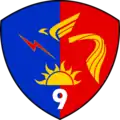 9th Air Wing
|
27th Air Squadron |
| ||||
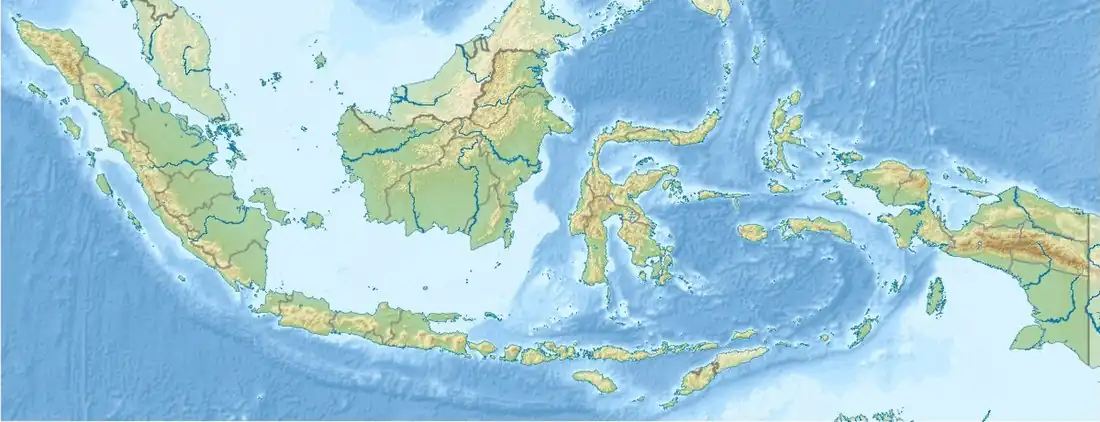
Quick Reaction Forces Command
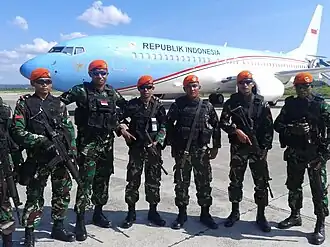
_Batalyon_Komando_461_Paskhas_1296_2.jpg)
 Quick Reaction Forces Command Quick Reaction Forces Command
| ||
|---|---|---|
| Wings | Detachment | Battalion |
1st Para-Commando Wing |
|
|
2nd Para-Commando Wing |
|
|
3rd Para-Commando Wing |
|
|
|
||
Sector Commands
| Commands | Headquarters | Radar & Missile Unit | Operational Control |
|---|---|---|---|
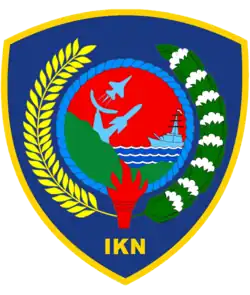 State Capital City Sector Command |
|
 National Air Operations Command | |
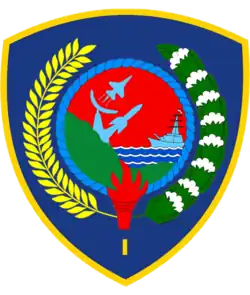 1st Sector Command |
|
 1st Air Operations Command | |
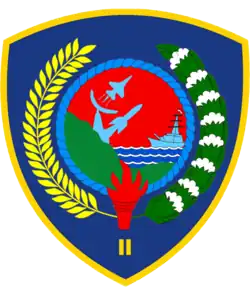 2nd Sector Command |
|
 2nd Air Operations Command | |
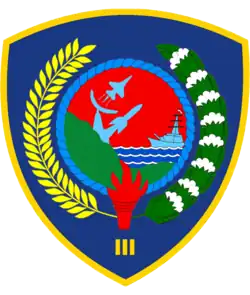 3rd Sector Command |
|
 3rd Air Operations Command |
Notable events
Bawean Incident
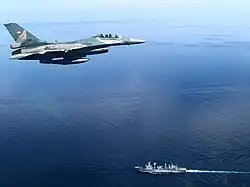
In July 2003, Kohanudnas detected unauthorized military aircraft flying over Bawean Island off the eastern coast of Java for more than two hours, and ordered the Indonesian Air Force to scrambled two fully armed F-16s Block 15 OCU from the 3rd Air Squadron to intercept the unauthorized aircraft, which were five US Navy F/A-18 Hornets. The incident ended peacefully through a Friend or Foe hand signal. A US spokesman said that the naval aircraft had sought permission to enter Indonesian airspace while escorting a US aircraft carrier, but that the request arrived too late at the Kohanudnas headquarters in Jakarta due to red tape.[14]
Pakistan International Airlines Incident
Pakistan International Airlines's Boeing 737-300 was detected entering Indonesian airspace without diplomatic clearance on 7 March 2011. Kohanudnas then ordered the Air Force to scramble a pair of Sukhoi to intercept and force the aircraft to land at Hasanuddin airport.[15]
Papua New Guinea Aircraft Incident
On 29 November 2011, Syamsudin Noor Airport's radar detected Dassault Falcon 900 EX that carried Papua New Guinean Deputy Prime Minister H.O.N. Belden Namah entering Indonesian airspace, then the airport's ATC and Kohanudnas tries to contact the aircraft as it is an unscheduled flight, but no response. As Kohanudnas also didn't authorize aircraft flight clearance, they decide to scramble two Sukhoi fighter to intercept and shadowing the Falcon near Banjarmasin, South Kalimantan, for about 37 minutes. It was found that Falcon was applied for flight clearance shortly before take-off and the clearance was not granted yet during the incident. The minister of foreign affairs of Indonesia said that Kohanudnas was conducting an electronic identification with radar and a visual identification by intercepting (the aircraft) according to standard procedures, and no harm occurred.[16]
Gallery
-
 Insignia of Kohanudnas (National Air Defense Command) (xxxx-January 2022)
Insignia of Kohanudnas (National Air Defense Command) (xxxx-January 2022)
See also
Notes
References
- ^ "LINTASAN SEJARAH KOMANDO OPERASI UDARA NASIONAL". TNI Angkatan Udara (in Indonesian). Retrieved 1 September 2023.
- ^ a b "Sejarah Terbentuknya KOHANUDNAS". www.kohanudnas.mil.id. 1 September 2014. Archived from the original on 15 March 2018. Retrieved 14 March 2018.
- ^ Pengumuman KASAU No. 57/23/Peng/KS/51 (Chief of Staff of the Air Force Order 57/23/Peng/KS/51) (in Indonesian). 1951.
- ^ @_TNIAU (2018-05-12). "Organisasi baru TNI AU setingkat Kotamaops yakni Koopsau III telah resmi berdiri, diresmikan oleh Panglima TNI Marsekal TNI Hadi Tjahjanto, S.I.P., bersamaan dengan Kotama TNI AD dan Kotama TNI AL, dalam sebuah upacara militer di Sorong Papua Barat, Jumat (11/5)" (Tweet) (in Indonesian) – via Twitter.
- ^ Aditya, Nicholas Ryan; Ramadhan, Ardito (10 August 2025). "Prabowo Resmikan Tiga Komando Daerah TNI AU, Berikut Daftar Panglimanya". Kompas.com (in Indonesian). Retrieved 11 August 2025.
- ^ Pattisina, Edna Caroline (28 January 2022). "Koopsudnas Diresmikan, Operasi TNI AU Kini Lebih Terintegrasi". Kompas.id (in Indonesian). Retrieved 11 August 2025.
- ^ Noviansyah, Wildan (2022-01-28). "KSAU Ganti Nama Kohanudnas Jadi Koopsudnas". Detik.com. Retrieved 2022-01-31.
- ^ Aditya, Nicholas Ryan; Prabowo, Dani (8 August 2025). "Kohanudnas Bakal Dihidupkan Kembali Usai Dilebur Tiga Tahun Lalu". Kompas.com (in Indonesian). Retrieved 11 August 2025.
- ^ "Koopsau 1". TNI AU. Retrieved 12 March 2020.
- ^ Rahmat, Ridzwan (10 July 2019). "Indonesia inaugurates new airbase on Batam Island". Jane's Defence Weekly. Singapore. Retrieved 12 March 2020.
- ^ "Koopsau 2". TNI AU. Retrieved 12 March 2020.
- ^ "Koopsau 3". TNI AU. Retrieved 12 March 2020.
- ^ "PENGALIHAN KODAL SATRAD BURAEN KE KOSEKHANUDNAS II". TNI Angkatan Udara. 18 September 2013. Retrieved 17 June 2022.
- ^ "Indonesia scrambles F-16s to intercept US planes". F-16.net. 4 July 2003. Retrieved 25 November 2011.
- ^ "Pesawat Pakistan Disergap 2 Sukhoi TNI". kompas.com. 7 March 2011. Retrieved 14 March 2018.
- ^ "Two Sukhois Tail Papua New Guinean Official Jets". tempo.co. 9 January 2012. Retrieved 14 March 2018.
External links
- Official webpage Archived 2014-05-16 at the Wayback Machine
